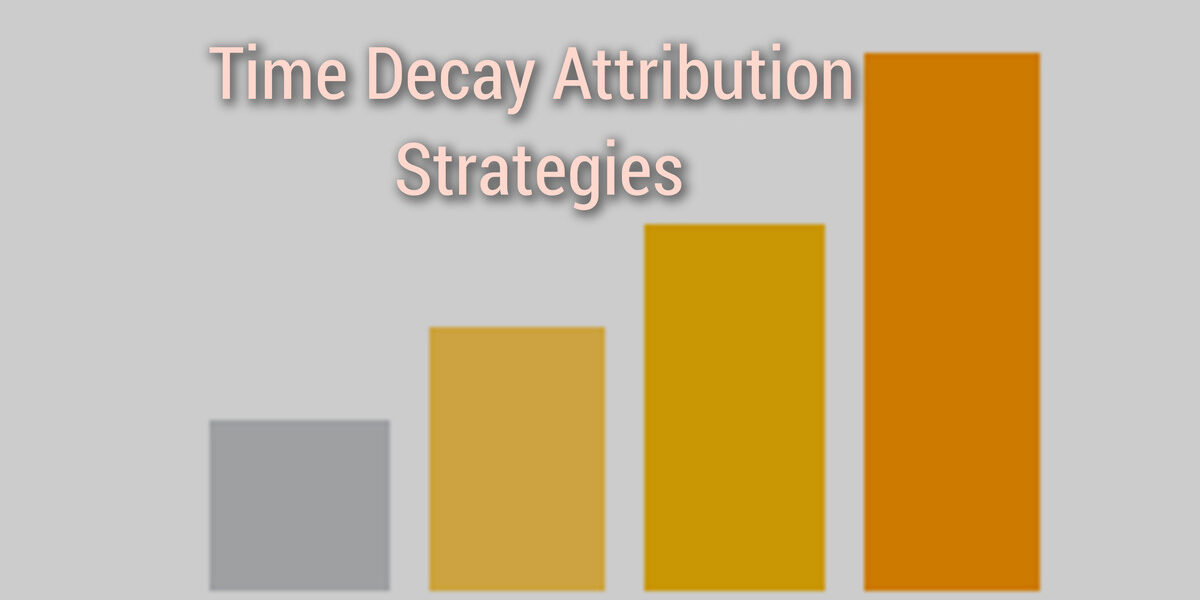Optimizing Results: Time Decay Attribution Strategies
For decades, single-touch attribution models have been the go-to options for marketers as they strive to determine which channels drive their conversions; however, the modern consumer’s journey has grown increasingly complicated, often involving numerous touch points across different mediums, and that means single-touch models no longer provide adequate insights into the consumer journey.

In response, many marketers are shifting to multi-touch attribution models, which assign conversion credit to more than one touchpoint along the journey. One such multi-touch framework that has gained traction among marketers is the time decay attribution model.
By shifting to such a model yourself, you can unlock more comprehensive data about the customer journey and pinpoint which channels are generating the best results. With that in mind, below is everything you need to know about the time decay attribution model.
What Is Time Decay Attribution?
At its core, time decay attribution is predicated on the idea that the value of each marketing touchpoint diminishes over time relative to its proximity to the conversion event; in other words, interactions that occur closer to the time of purchase are most valuable, while earlier interactions are less valuable (with the first exchange being the least valuable).
Like other attribution models, the time decay framework assigns credit for conversion in the form of a percentage. Where single-touch models assign 100% of the credit to one exchange, the time decay attribution model assigns credit to several different interactions, with the last interaction a customer has with a brand receiving the largest percentage of credit.
For simplicity’s sake, let’s say that a customer interacted with your brand three times before making a purchase. First, they saw your brand on social media; a week later, they viewed a connected TV (CTV) ad while streaming their favorite show; the next day, they saw one of your Google Ads, clicked on it, and proceeded to make a purchase.
Under the time decay attribution model, you might distribute the credit for the conversion as follows:
- Social Media View: 10%
- CTV Ad: 40%
- Google Ad: 50%
The social media view would receive the least amount of credit as it was the first interaction the customer had with your brand and the furthest away from the conversion event as a result. The CTV ad would receive a much larger percentage, in comparison, because it occurred the day before the conversion, and the final interaction would undoubtedly receive the most credit because it was directly tied to the conversion.
Putting the Time Decay Attribution Model to Work for Your Business
If, given the above details, you believe that the time decay attribution model could be a valuable addition to your marketing analytics strategy, here are some practical tips for implementing it:
Invest in Comprehensive Data Tracking
First, ensure that you are tracking all of your digital marketing channels and campaigns. You need to pay attention to everything, including views, reach, click-through rates (CTR), and generated leads. The accuracy of time decay attribution relies on the completeness of your data, so if there are gaps in your data, the results will be incomplete or misleading.
Choose the Right Tools
Next, invest in an analytics platform that is capable of supporting sophisticated attribution models, including time decay. These tools should offer flexibility in adjusting decay rates to suit different campaign lengths and sales cycles. In addition, make sure that the platform you choose can support all of your marketing channels, including social media, CTV ads, and organic traffic.
Customize the Decay Rate
The standard decay rate might not fit all campaigns or customer behaviors, meaning it’s best to experiment with different rates to find an optimal model that accurately reflects how your marketing efforts contribute to conversions. Consider the length of your sales cycle and the complexity of the customer journey as you conduct your search.
Segment the Data
Apply the time decay attribution model strategically by segmenting your audience based on behavior, demographics, or channel engagement; different segments may exhibit unique preferences and paths to conversion.
Use Other Models
The time decay attribution model is an excellent tool for analyzing the customer journey, but it only provides a piece of the puzzle; obtaining a holistic view of the customer experience requires the use of multiple attribution models. Compare the data from each and use their complementary insights to optimize your marketing strategy.
Leveraging Time Decay Insights for Optimization
As the landscape of digital marketing continues to mature, the adoption of sophisticated attribution models like time decay has become a necessity to gain a competitive edge over others in your industry.
Mastering time decay attribution offers a strategic advantage. By acknowledging the diminishing impact of touch points over time and focusing on those that drive conversions, you can allocate your budget more effectively and craft messages that resonate with ready-to-convert leads and meet them on their terms.
